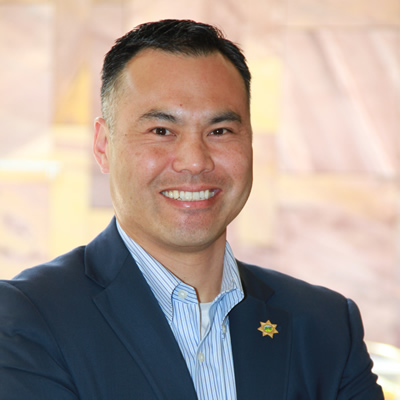More than a few decisions by US leaders have raised eyebrows during the COVID-19 pandemic. One of the most revealing of the widening leadership gap in Washington, is the fate of Navy Captain Brett Crozier.
Captain Crozier is the former commanding officer of the aircraft carrier, Theodore Roosevelt, who was recently relieved of his duties by Navy brass for going outside the chain of command to ensure the well-being of his crew when COVID-19 started spreading onboard his ship. While his actions caused his removal by a top Pentagon political appointee, the sailors who served under him showed their appreciation:
Those who know a little about military protocols understand how big a deal it was for Captain Crozier to raise the alarm about the growing coronavirus threat aboard his ship—we’re talking about someone who reached the pinnacle of command in the mighty US Navy by getting to be CO of one of the most powerful warships ever built, risking it all for the sake of his people.
To me, that’s what true leadership is: realizing when something drastic may need to be done and having the courage to do it for the sake of those you lead and serve.
In contrast, we can look at the actions taken by Scotland’s Chief Medical Officer who broke her own rules about physical distancing:
Empowering leaders at every level
The Crozier episode brought to light a key requirement for an organization’s readiness to face any crisis: empowering its leaders at all levels.
Trying to control absolutely everything from the top during a crisis can result in paralysis. So, I thought it’d be interesting to use the Crozier example to highlight a few elements of the kind of crisis ready leadership that can help give all organizations a chance to shine through challenging circumstances.
Hats off to USN Capt. Brett Crozier. In honor of his exemplary leadership, let’s borrow his name to structure these key aspects of a crisis ready leader:
C is for courage:
After gauging the situation, leaders across crisis ready organizations are not afraid to act. They follow their training, their plans and their intuition to do the best with the tools they have.
R is for responsibility:
A successful organization has a clear accountability framework that trains and then encourages leaders to be proactive during a crisis in their areas of responsibility. They know when to seize the initiative and when to bring issues of concern up their chain of command.
O is for openness:
Leaders across an organization poised to come through a crisis successfully, are transparent about their intentions, goals and the rationale behind the decisions they take.
Z is for zeal:
Strong leaders are unrelenting in their pursuit of doing the “right thing”. They constantly assess their course of action and adjust to meet the reality on the ground at all levels.
I is for Integrity:
Strong leaders conduct themselves and shape their actions during a crisis by following their organization’s values and with the “greater good” in mind. They think beyond immediate corporate benefits. Instead, they adopt the longer term vision about how their people, their stakeholders and their clients—and eventually their reputation—will come out stronger on the other side.
E is for empathy:
Strong leaders keep demonstrating they care for their people. They see to their well-being so the mission can be carried on. They lead by example, and they lead with emotional intelligence.
R is for readiness:
The CEO of a crisis ready enterprise knows that the ability to be nimble, to do the right thing and to empower its leaders at all levels are all based on good planning, clear and simple procedures, and a sound exercise program. All the elements of a culture of readiness.
Needless to say, I think Captain Crozier will do very well in the private sector.
Are your leaders empowered?
How does your organization empower its leaders—and what have the results proven to be for your teams, your brand, your reputation and your management of the current COVID-19 impacts?
Right now is a perfect time to assess this aspect of your company’s culture, take notes, learn from mistakes, observe and learn from others, and put a plan together to strengthen any areas that will help solidify your crisis readiness moving forward.









